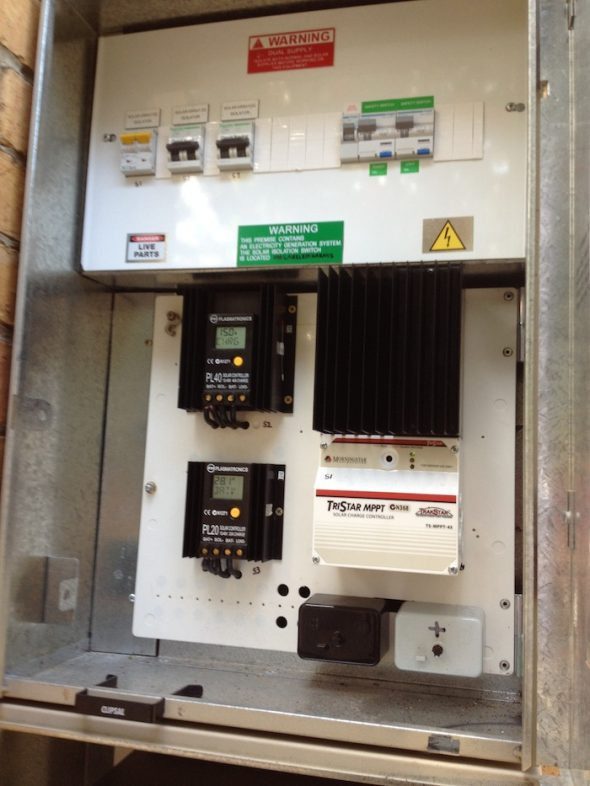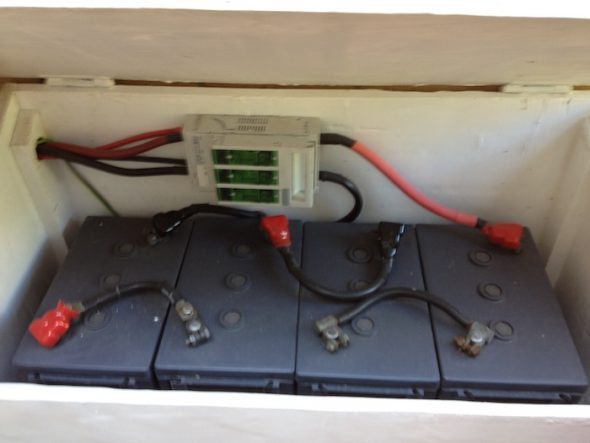Solar out back, wind in front: Secrets of a suburban clean energy powerhouseby Sophie Vorrath |
For those who visited Mick Harris' home on Sustainable House Day in Melbourne on Sunday, the idea that green living is the preserve of the moneyed classes will have been put to bed. This was no Grand Design of sustainable architecture – Kevin McCloud was nowhere to be seen – but, just as the brochure had promised, a pretty standard 1960s brick veneer home in the suburb of Ivanhoe. A pretty standard home, that is, with two grid-connected solar arrays, a battery storage system fed by three more PV arrays, an solar-powered electric milk truck in the garage, a Hills Hoist in the back yard, and a wind turbine in the front.
In the roughly three years that Harris – a sustainability and clean energy pioneer, managing director at Envirogroup and a specialist consultant to the Alternative Technology Association – has owned the house, he has transformed it into a solar and wind powerhouse, which produces much more clean, renewable energy than it needs and – having got in before Victoria's recent solar feed-in tariff cuts– even contributes to the household's income, earning 66c/kwH for the electricity it sends back to the grid.
So what are the specs? Let's start with the solar. At the front of the house is the "solar pergola" – a custom-built verandah made of 12x 40W thin-film solar panels which, as well as providing shade for the house in summer, produce energy – 480W altogether.
The PV pergola, along with two more rooftop arrays – a six-panel, 1100W array on the northern-facing roof, and a four-panel 740W array on the west-facing roof – all feed electricity into a 24 volt, 330 amp-hour battery bank (pictured below) at the side of the house, which feed a 1,000W Latronics inverter, which supplies all the power for the house's lights (a lot of them LED), fridge, TV and computer.
The battery system ensures that power is always available for the house – even during a blackout – and with each household appliance matched to two power points – one from the grid and one from the solar/battery system – you have the choice of running them on- or off-grid.
As for the two grid-connected solar systems, the first – located on the front of the house – uses eight 185W monocrystalline panels to produce 1480W and feeds into a grid-connected inverter, which in turn feeds into the house's switchboard and runs its other appliances, such as the electric stove. The second grid-connected system, which is on the roof of the bungalow/garage at the back of the property (pictured below), uses 18x 185W monocrystalline panels to produce 3,300W.



No comments:
Post a Comment